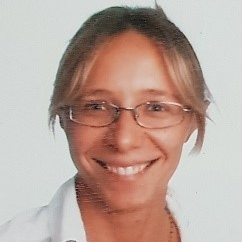Digital Twin Technology: New Frontiers for Personalized Healthcare
A special issue of Electronics (ISSN 2079-9292). This special issue belongs to the section "Bioelectronics".
Deadline for manuscript submissions: closed (31 March 2022) | Viewed by 31094
Special Issue Editors
2. Fondazione Toscana Gabriele Monasterio, CNR - Regione Toscana, via Trieste 41, 56126 Pisa, Italy
Interests: biomedical signal processing; algorithms for fast image acquisition and reconstruction; ultrasound; photoacoustic imaging
Interests: medical image processing and analysis
Special Issues, Collections and Topics in MDPI journals
Interests: medical image acquisition and reconstruction
Special Issues, Collections and Topics in MDPI journals
Interests: digital twin; numerical models; 3D virtual models; 3D printing; medical image analysis; medical image fusion; optical coherence tomography; machine learning
Special Issue Information
Dear Colleagues,
The “digital twin” is the dynamic digital representation of the patient’s anatomy and physiology through computational models such as finite element analysis (FEM) and computational fluid dynamics (CFD), which are continuously updated from imaging sensors, wearable devices, and laboratory and clinical data. Information obtained from multiple sources can be used to create “digital twin” of organs or individuals that reflect the anatomical, physiological, functional, and biochemical behavior of the real system. In addition, digital twin used in combination with virtual reality (VR) and augmented reality (AR) and machine learning (ML) technologies will help doctors in therapeutic path personalization and in minimally invasive intervention procedures.
Although the first “digital twin” projects are already being tested with interesting results, much remains to be done in the development of new technologies and applications.
The aim of this Special Issue of Electronics is to gather cutting-edge research in the field of “digital twin” for future applications. We invite researchers to contribute original and unique articles, as well as sophisticated review articles in the field of medical imaging (ultrasound, optical, photoacoustic, X-ray, nuclear, magnetic resonance, etc.) and image processing, computational fluid dynamics, and artificial intelligence.
Topics of interest include, but are not limited to the following areas:
- New sensors and detector technologies;
- Wearable devices;
- Algorithms for fast image acquisition and reconstruction;
- Multimodal medical image analysis and fusion;
- Signal and imaging integration;
- 3D virtual models;
- 3D printing;
- Augmented reality and virtual reality;
- Finite element analysis;
- Computational fluid dynamics;
- Modelling and analysis;
- Machine learning
Prof. Dr. Luigi Landini
Prof. Dr. Vincenzo Positano
Prof. Dr. Maria Filomena Santarelli
Prof. Dr. Simona Celi
Guest Editors
Manuscript Submission Information
Manuscripts should be submitted online at www.mdpi.com by registering and logging in to this website. Once you are registered, click here to go to the submission form. Manuscripts can be submitted until the deadline. All submissions that pass pre-check are peer-reviewed. Accepted papers will be published continuously in the journal (as soon as accepted) and will be listed together on the special issue website. Research articles, review articles as well as short communications are invited. For planned papers, a title and short abstract (about 100 words) can be sent to the Editorial Office for announcement on this website.
Submitted manuscripts should not have been published previously, nor be under consideration for publication elsewhere (except conference proceedings papers). All manuscripts are thoroughly refereed through a single-blind peer-review process. A guide for authors and other relevant information for submission of manuscripts is available on the Instructions for Authors page. Electronics is an international peer-reviewed open access semimonthly journal published by MDPI.
Please visit the Instructions for Authors page before submitting a manuscript. The Article Processing Charge (APC) for publication in this open access journal is 2400 CHF (Swiss Francs). Submitted papers should be well formatted and use good English. Authors may use MDPI's English editing service prior to publication or during author revisions.
Keywords
- digital twin
- personalized medicine
- image analysis
- 3D models
- 3D printing
- biomedical signal processing
- medical image reconstruction
- finite element analysis
- computational fluid dynamics
- machine learning








